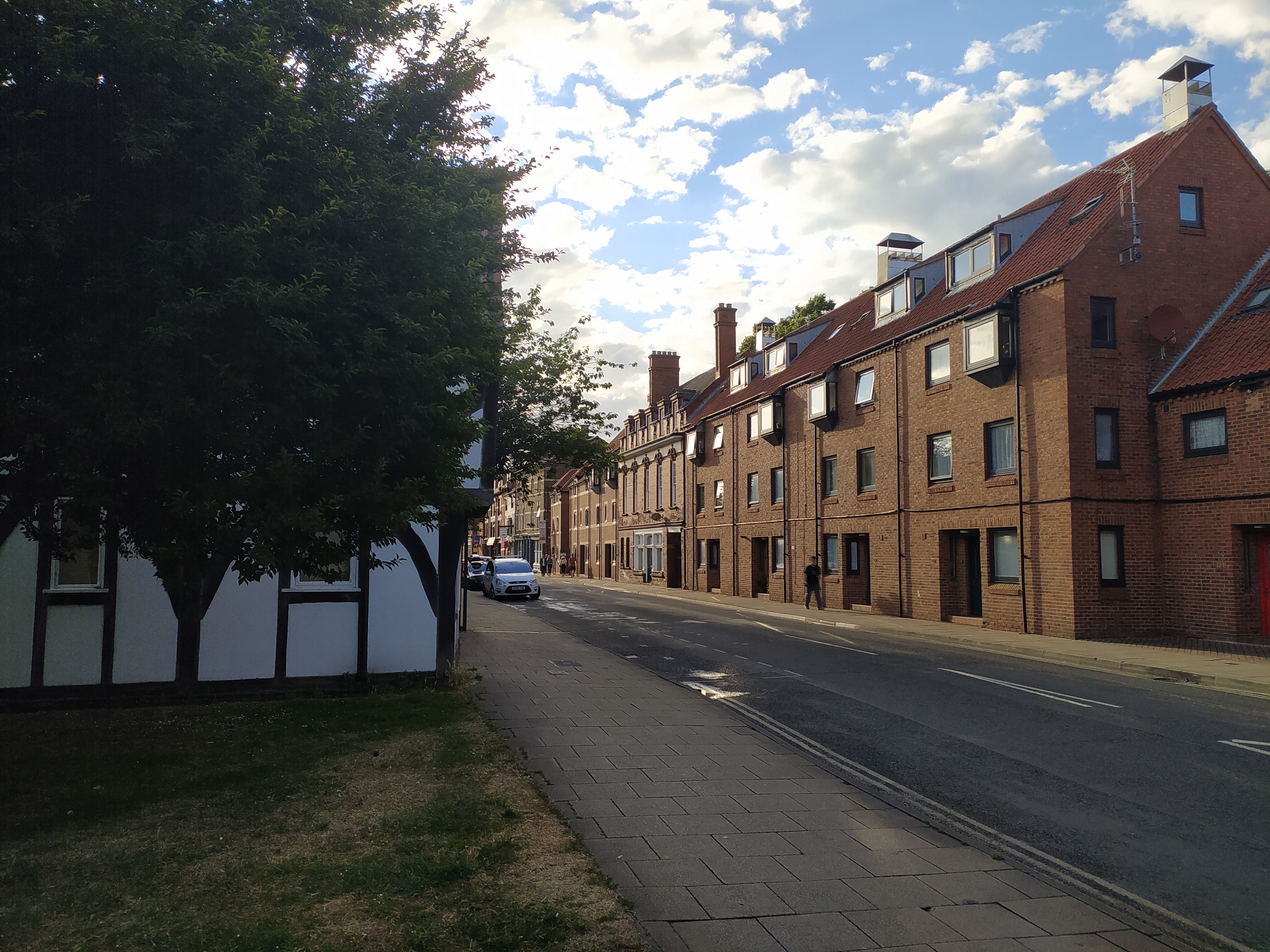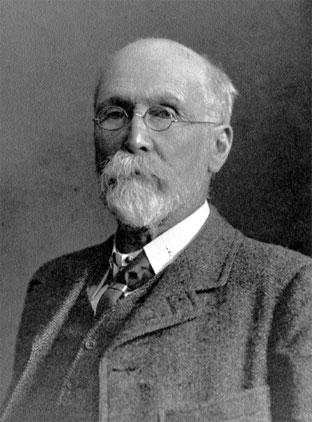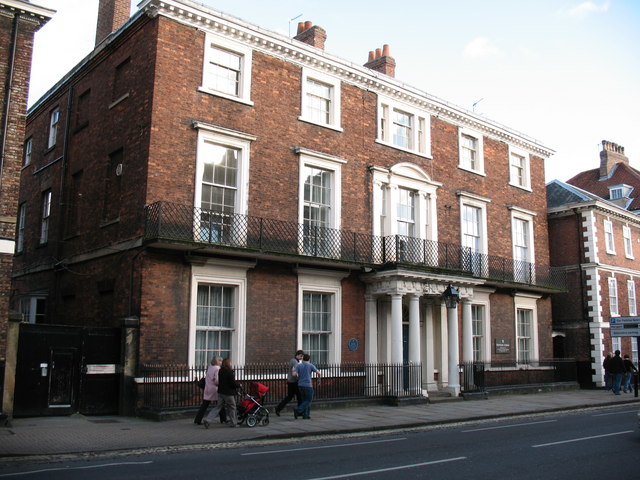|
John Bowes Morrell
John Bowes ('J.B.') Morrell (1873–1963) was an English author and historian. He was twice Lord Mayor of York, a leading figure in the local movement to establish a university in York, and founder of the York Conservation Trust. The J.B. Morrell Library at the University of York is named after him. Biography John Morrell's father was William Wilberforce Morrell (1837–1904), a bank manager in York, and the author of 'The History of Selby' which was illustrated by his sister Jemima. His mother, born Lydia Hutchinson (1832–1939) married the non-conformist Morrell, who was a Wesleyan Methodist, whilst it appears she was a Quaker. Their religiosity seems to have been behind John's activism in Liberal Politics from a young age. In 1884 John attended Bootham School, a Quaker establishment. It was at this school where he was to meet his future colleagues at the Rowntree's family chocolate and confectionery company, Arnold Rowntree and Seebohm Rowntree. Morrell joined Rowntree's ... [...More Info...] [...Related Items...] OR: [Wikipedia] [Google] [Baidu] |
Councillor
A councillor is an elected representative for a local government council in some countries. Canada Due to the control that the provinces have over their municipal governments, terms that councillors serve vary from province to province. Unlike most provincial elections, municipal elections are usually held on a fixed date of 4 years. Finland ''This is about honorary rank, not elected officials.'' In Finland councillor (''neuvos'') is the highest possible title of honour which can be granted by the President of Finland. There are several ranks of councillors and they have existed since the Russian Rule. Some examples of different councillors in Finland are as follows: * Councillor of State: the highest class of the titles of honour; granted to successful statesmen * Mining Councillor/Trade Councillor/Industry Councillor/Economy Councillor: granted to leading industry figures in different fields of the economy *Councillor of Parliament: granted to successful statesmen *Off ... [...More Info...] [...Related Items...] OR: [Wikipedia] [Google] [Baidu] |
Selby
Selby is a market town and civil parish in the Selby District of North Yorkshire, England, south of York on the River Ouse, with a population at the 2011 census of 14,731. The town was historically part of the West Riding of Yorkshire until 1974. Selby once had a large shipbuilding industry, and was an important port on the Selby Canal which brought trade from Leeds. History The town's origins date from the establishment of a Viking settlement on the banks of the River Ouse. Archaeological investigations in Selby have revealed extensive remains, including waterlogged deposits in the core of the town dating from the Roman period onwards. It is believed that Selby originated as a settlement called Seletun which was referred to in the Anglo-Saxon Chronicle of AD 779. The place-name 'Selby' is first attested in a Yorkshire charter , where it appears as ''Seleby''. It appears as ''Selbi'' . The name is thought to be a Scandinavian form of Seletun, meaning ' sallow tree settlemen ... [...More Info...] [...Related Items...] OR: [Wikipedia] [Google] [Baidu] |
Bowes Morrell House
The Bowes Morrell House is a historic building on Walmgate in the city centre of York, in England. The house was one of four for which a licence was granted in 1396 to construct in the churchyard of St Peter-le-Willows. It may have been used as a vicarage for the church, or alternatively for St Margaret's Church. In later years, the building was a cheap lodging house for travelling workers. By the late 19th-century, it was owned by the O'Hara family, bought out by the Kilmartin family in the 1930s. It was nicknamed the "doss house", and had a sign above the door reading "good lodgings down this passage", despite its reputation for poor-quality accommodation. The house is timber framed, with two stories, and originally had an L plan, with the main section being a hall 20 feet long and 10-and-a-half feet wide. An extension was built in the 16th century, giving the building a square plan. In the late-17th century, a further extension was added in brick to the south end of the ... [...More Info...] [...Related Items...] OR: [Wikipedia] [Google] [Baidu] |
Walmgate
Walmgate is a street in the city centre of York, in England. During the Middle Ages, Medieval period, the street was the site of a seafissh and cattle market. Walmgate Bar, was involved in the Siege of York in 1644, during the First English Civil War. During the 20th century, many of the older buildings were cleared away and newer structures put up. History The street lay outside Roman Eboracum, and although it was crossed by a Roman road, evidence of occupation in the period is limited to two wharfs on the River Foss, and some burials. The road appears to have developed in the Viking Jorvik period, during which it mostly hosted industrial and commercial uses. The street was first mentioned in about 1080, as "Walbegate", suggesting it may be named after an individual called "Walba". Walmgate Bar, the gate at the south-east end of the street, was built before 1155, but the section of the York city walls enclosing the street was built later: permission to construct this sectio ... [...More Info...] [...Related Items...] OR: [Wikipedia] [Google] [Baidu] |
York Civic Trust
York Civic Trust is a membership organisation and a registered charity based in York, UK. Its primary function is to "preserve, protect and advise on the historic fabric of York". It is based in Fairfax House. Foundation York Civic Trust was founded in 1946 in a meeting at the Mansion House between four residents of York: John Bowes Morrell, Oliver Sheldon, Eric Milner-White and Noel Terry. The impetus for the founding of the Civic Trust came from an increasing concern about post-war planning and over-development. The city’s medieval core, and also the buried archaeological heritage of its much longer history, were in considerable danger from the developers.The Archbishop of York, Cyril Garbett, and the Lord Mayor Fred Gaines were in attendance at the first meeting of the Trust. In his speech, the Archbishop referred to the four threats facing the city: time and weather; war (the city had suffered some damage during the Baedeker raid in 1942); commercial greed; and ignoranc ... [...More Info...] [...Related Items...] OR: [Wikipedia] [Google] [Baidu] |
Yorkshire Philosophical Society
The Yorkshire Philosophical Society (YPS) is a charitable learned society (charity reg. 529709) which aims to promote the public understanding of the natural sciences, the social sciences, and the archaeology and history of York and Yorkshire. History The Society was formed in York in December 1822 by James Atkinson, William Salmond, Anthony Thorpe and William Vernon. The Society's aim was to gain and spread knowledge related to science and history and they built a large collection for this purpose. The geologist John Phillips was employed as the Society's first keeper of its museum. In 1828 the Society was given, by royal grant, some of the grounds of St Mary's Abbey including the ruins of the abbey. On this land the Society constructed a number of buildings including the Yorkshire Museum built to house the Society's geological and archaeological collections and opened in 1830. Landscape architect Sir John Murray Naysmith was commissioned by the Society to create a botanic ... [...More Info...] [...Related Items...] OR: [Wikipedia] [Google] [Baidu] |
Birmingham Gazette
The ''Birmingham Gazette'', known for much of its existence as ''Aris's Birmingham Gazette'', was a newspaper that was published and circulated in Birmingham, England, from the eighteenth to the twentieth centuries. Founded as a weekly publication in 1741, it moved to daily production in 1862, and was absorbed by the ''Birmingham Post'' in 1956. The newspaper's title was initially ''Birmingham Gazette and General Correspondent'' from 1741; ''Aris's Birmingham Gazette'' by 1743, and continuing until 1862; ''Birmingham Daily Gazette'' from 1862 to 1904; ''Birmingham Gazette & Express'' from 1904 to 1912; and ''Birmingham Gazette'' from 1912 to 1956. In November 1956 the ''Birmingham Gazette'' was absorbed by the ''Birmingham Post''. The merger led to the publication of ''The Birmingham Post & Birmingham Gazette'' which ran until 1964. History The ''Gazette'' was founded as the ''Birmingham Gazette and General Correspondent'' by Thomas Aris, a stationer from London who had moved ... [...More Info...] [...Related Items...] OR: [Wikipedia] [Google] [Baidu] |
Newcastle-upon-Tyne
Newcastle upon Tyne ( RP: , ), or simply Newcastle, is a city and metropolitan borough in Tyne and Wear, England. The city is located on the River Tyne's northern bank and forms the largest part of the Tyneside built-up area. Newcastle is also the most populous city of North East England. Newcastle developed around a Roman settlement called Pons Aelius and the settlement later took the name of a castle built in 1080 by William the Conqueror's eldest son, Robert Curthose. Historically, the city’s economy was dependent on its port and in particular, its status as one of the world's largest ship building and repair centres. Today, the city's economy is diverse with major economic output in science, finance, retail, education, tourism, and nightlife. Newcastle is one of the UK Core Cities, as well as part of the Eurocities network. Famous landmarks in Newcastle include the Tyne Bridge; the Swing Bridge; Newcastle Castle; St Thomas’ Church; Grainger Town including Grey's M ... [...More Info...] [...Related Items...] OR: [Wikipedia] [Google] [Baidu] |
Friends Meeting House
A Friends meeting house is a meeting house of the Religious Society of Friends (Quakers), where meeting for worship is usually held. Typically, Friends meeting houses are simple and resemble local residential buildings. Steeples, spires, and ornamentation are usually avoided. When Quakers speak of a "church," it generally refers to the persons of the worshipping community, rather than the building itself. History Generally, Quakers believe that meeting for worship can occur in any place - not just in a designated meeting house. Quakers have quoted to support this: "Where two or three meet together in my name, there s Godin the midst of them." Therefore, theoretically, meeting for worship may be held anywhere. Before the advent of meeting houses, Quakers met for worship outdoors, in homes, or in local buildings. In the late 17th century, Welsh Quaker Richard Davies (1635-1708) described his experience meeting Friends outdoors:I went to visit ouryoung men, my former com ... [...More Info...] [...Related Items...] OR: [Wikipedia] [Google] [Baidu] |
Seebohm Rowntree
Benjamin Seebohm Rowntree, CH (7 July 1871 – 7 October 1954) was an English sociological researcher, social reformer and industrialist. He is known in particular for his three York studies of poverty conducted in 1899, 1935, and 1951. The first York study involved a comprehensive survey into the living conditions of the poor in York during which investigators visited every working class household, and his methodology inspired many subsequent researches in British empirical sociology."Benjamin Seebohm Rowntree." ''World of Sociology'', Gale, 2001. ''Gale In Context: Biography'', https://link.gale.com/apps/doc/K2427100159/BIC?u=mlin_c_collhc&sid=BIC&xid=9317a272. Accessed 6 Oct. 2019. By strictly defining the concept of poverty in his studies, he was able to reveal that the poverty in York was more of structural rather than moral reasons, such as of low wages, which went against the traditionally held view that the poor were responsible for their own plight. [...More Info...] [...Related Items...] OR: [Wikipedia] [Google] [Baidu] |
Rowntree's
Rowntree's is a British confectionery brand and former business based in York, England. Rowntree developed the Kit Kat (introduced in 1935), Aero (introduced in 1935), Fruit Pastilles (introduced in 1881), Smarties (introduced in 1937) brands, and the Rolo and Quality Street brands when it merged with Mackintosh's in 1969 to form Rowntree Mackintosh Confectionery. Rowntree's also launched After Eight thin mint chocolates in 1962. The Yorkie and Lion bars were introduced in 1976. Rowntree's also pioneered the festive selection box (a gift consisting of assorted bars and sweets) which in the UK have been a staple gift at Christmas for over a century. Founded in 1862, the company developed strong associations with Quaker philanthropy. Throughout much of the 19th and 20th centuries, it was one of the big three confectionery manufacturers in the United Kingdom, alongside Cadbury and Fry, both also founded by Quakers. In 1981, Rowntree's received the Queen's Award for Ent ... [...More Info...] [...Related Items...] OR: [Wikipedia] [Google] [Baidu] |
Bootham School
Bootham School is an independent Quaker boarding school, on Bootham in the city of York in England. It accepts boys and girls ages 3–19, and had an enrolment of 605 pupils in 2016. It is one of seven Quaker schools in England. The school was founded by the Religious Society of Friends (Quakers) and opened on 6 January 1823 in Lawrence Street, York. Its first headmaster was William Simpson (1823–1828). He was followed by John Ford (1828-c.1865). The school is now on Bootham, near York Minster, in a building originally built in 1804 for Sir Richard Vanden Bempde Johnstone. The school's motto ''Membra Sumus Corporis Magni'' means "We are members of a greater body", quoting Seneca the Younger (Epistle 95, 52). Academics Bootham was ranked at 43rd in the 2011 Independent Schools A-Levels League Tables. Notable alumni Notable former pupils include the 19th-century parliamentary leader John Bright, the mathematician Lewis Fry Richardson ("father of fractals"), the physic ... [...More Info...] [...Related Items...] OR: [Wikipedia] [Google] [Baidu] |









